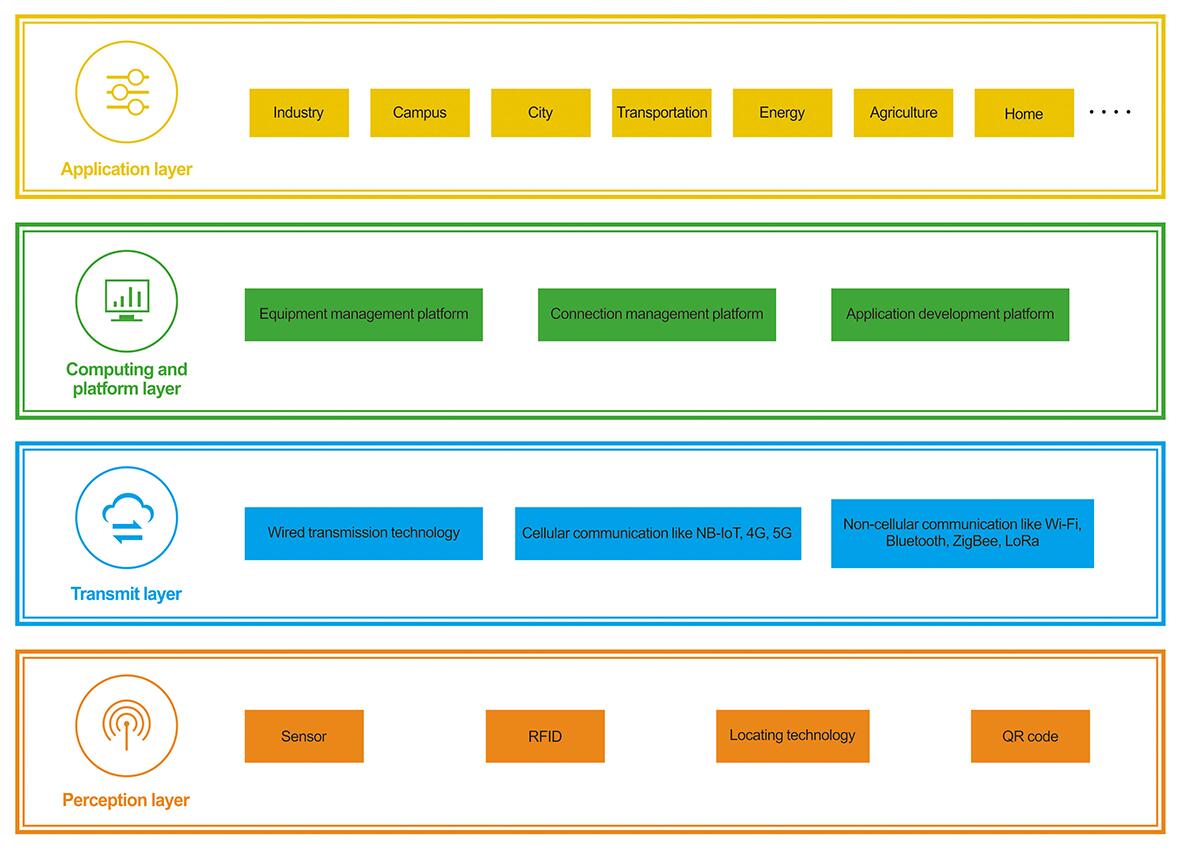Defining Range of IoT
IoT is short for Internet of Things. As the name implies, the Internet of Things is the Internet of things connected. There are two meanings here.First, the core and foundation of the Internet of Things is still the Internet, which is an extension and expansion network based on the Internet; second, its user-side extented and expanded information exchange and communication between objects. The Internet of Things is the third wave of the development of the world’s information industry after computers and the Internet.
Until now, there isn’t an accurate and recognized definition of the Internet of Things. This is mainly due to: First, the theoretical system of the Internet of Things has not been fully established, and it has not been recognized deep enough. Second, because the Internet of Things is closely related to the Internet, mobile communication networks, and sensor networks, researchers in these fields have different starting points and end points for thinking about the Internet of Things, and there is no consensus in the short term.According to the industry information we have observed, the Internet of Things is an information carrier based on the Internet and traditional telecommunications networks, allowing all independently addressable common physical objects interconnected. It has three characteristics: common object equipment, autonomous terminal interconnection, and universal service intelligence.
Development History of the Internet of Things
The idea of the Internet of Things can be traced back to the book “The Road Ahead” written by Bill Gates in 1995. In this book, Bill Gates has already mentioned things connected. It was only limited by the development of wireless networks, hardware and sensing equipment at that time, and did not attract attention. In 1998, the Massachusetts Institute of Technology (MIT) put forward the idea of the Internet of Things called the micro EPC system; in 1999, the US Auto-IDCenter first proposed the concept of the Internet of Things. In 2009, Wen Jiabao, then Premier of Chinese State Council, put forward the strategic concept of “perceive China” in Wuxi, which is considered as the beginning of the development of China’s Internet of Things industry.Since then, China’s Internet of Things industry has begun to grow quickly.
Summarizing the development of China’s Internet of Things industry, it has roughly gone through several processes:
Phase 1: the emergence of smart consumer products
In the past few years from 2012 to 2015, consumer IoT products exploded overnight, but then slowly faded. After the concept of the Internet of Things came out,many people are very excited. Coupled with the rise of the mobile Internet, IoT entrepreneurs naturally targeted the consumer-level market.Under the temptation of 100 billion device connections, many companies and individuals have invested in the army of smart products.Smart bulbs, smart sockets, smart kettles, smart rice cookers, and other smart products appear on the market, the general idea is to use traditional hardware, coupled with Wi-Fi, Bluetooth, ZiBbee and other wireless technologies, and then combined with APP for control. Of course, at this stage, many cloud platform startups have emerged.This craze is coming fast and going fast, because there are still problems with product stability and user experience, and the price is relatively high, for consumers, the price /performance ratio is not high, so the market acceptance is relatively low. It is not that the consumer market has no opportunities, but it requires to find application scenarios and run through the business model. Of course, a stable technic team is needed for long-term updates and iterations of the products, and there are still a group of consumer-grade IoT products in the market that have withstood the test of the market.
Phase 2: underlying technology completed
After phase 1 has passed, many people reflect that an important reason why the Internet of Things is not highly recognized in the market is that the technology has not yet made substantial breakthroughs. Therefore, in the second phrase, the Internet of Things needs to make a breakthrough compared to the original technology at the technical level. At this time, various technologies for the Internet of Things emerged, such as new transmission technologies like NB-IoT and LoRa, AI algorithms and intelligent voice technologies were popularized, and computing and storage technologies such as edge computing /intelligent computing were also on the forefront. Sensor products are also more intelligent, with more functions and so on.
Phase 3: the rise of industry-level applications
After the technological breakthrough is completed, commercial verification is required. After years of market selection, the application of the Internet of Things has gradually changed from the early consumer applications and developed towards enterprise-level applications.This is mainly because;
First, the application of the Internet of Things is fragmented, and it is difficult for a single enterprise to take it all. It is often applied in the form of projects, which is more suitable for enterprises.Second, enterprise-level applications have better business models that can better sustain the development of the enterprise itself.Of course, when the industry matures, the Internet of Things will still enter consumer-level applications.
Here is the structure of IoT

Nexqo is a professional RFID hardware provider, click here to explore our products.
.png)
